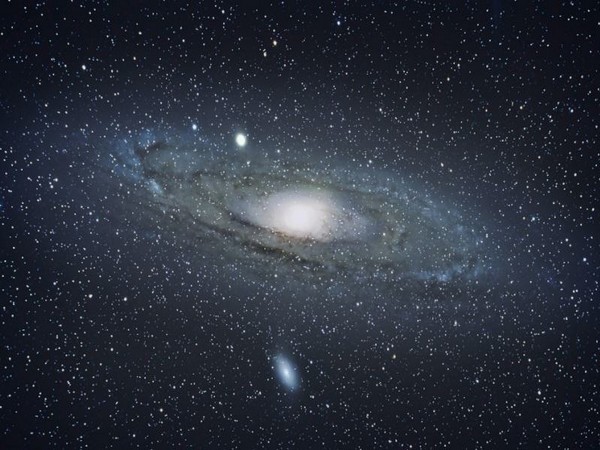

Sometimes you need to first locate the issue in order to identify it.
The planets, stars, and galaxies that we know and love today were created throughout time as a result of stuff being thrown outward at the beginning of the universe. Today, scientists may attempt to grasp the forces that influenced the universe’s evolution by meticulously creating a map of that stuff.
One of the most exact assessments of the current distribution of matter in the universe has been published by a team of researchers, including many from the University of Chicago and Fermi National Accelerator Laboratory.
Combining data from two major telescope surveys of the universe, the Dark Energy Survey and the South Pole Telescope, the analysis involved more than 150 researchers and is published as a set of three articles on January 31 in Physical Review D.
Among other findings, the analysis indicates that matter is not as ‘clumpy’ as we would expect based on our current best model of the universe, which adds to a body of evidence that there may be something missing from our existing standard model of the universe.
Cooling and clumps
After the Big Bang created all the matter in the universe in a very hot, intense few moments about 13 billion years ago, this matter has been spreading outward, cooling and clumping as it goes. Scientists are very interested in tracing the path of this matter; by seeing where all the matter ended up, they can try to recreate what happened and what forces would have had to have been in play.
The first step is collecting enormous amounts of data with telescopes.
In this study, scientists combined data from two very different telescope surveys: The Dark Energy Survey, which surveyed the sky over six years from a mountaintop in Chile, and the South Pole Telescope, which looks for the faint traces of radiation that are still traveling across the sky from the first few moments of the universe.
Combining two different methods of looking at the sky reduces the chance that the results are thrown off by an error in one of the forms of measurement. “It functions like a cross-check, so it becomes a much more robust measurement than if you just used one or the other,” said UChicago astrophysicist Chihway Chang, one of the lead authors of the studies.
In both cases, the analysis looked at a phenomenon called gravitational lensing. As light travels across the universe, it can be slightly bent as it passes objects with lots of gravity, like galaxies.
This method catches both regular matter and dark matter–the mysterious form of matter that we have only detected due to its effects on regular matter–because both regular and dark matter exerts gravity.
By rigorously analysing these two sets of data, scientists could infer where all the matter ended up in the universe. It is more precise than previous measurements–that is, it narrows down the possibilities for where this matter wound up–compared to previous analyses, the authors said.
The majority of the results fit perfectly with the currently accepted best theory of the universe.
But there are also signs of a crack–one that has been suggested in the past by other analyses, too.
“It seems like there are slightly fewer fluctuations in the current universe, than we would predict assuming our standard cosmological model anchored to the early universe,” said analysis coauthor and University of Hawaii astrophysicist Eric Baxter (UChicago PhD’14).
That is if you make a model incorporating all the currently accepted physical laws, then take the readings from the beginning of the universe and extrapolate it forward through time, the results look slightly different from what we actually measure around us today.
Specifically, today’s readings find the universe is less ‘clumpy’–clustering in certain areas rather than evenly spread out–than the model would predict.
If other studies continue to find the same results, scientists say, it may mean there is something missing from our existing model of the universe, but the results are not yet to the statistical level that scientists consider to be ironclad. That will take further study.
However, the analysis is a landmark as it yielded useful information from two very different telescope surveys. This is a much-anticipated strategy for the future of astrophysics, as more large telescopes come online in the next decades, but few had actually been carried out yet.
“I think this exercise showed both the challenges and benefits of doing these kinds of analyses,” Chang said, adding, “There’s a lot of new things you can do when you combine these different angles of looking at the universe.”